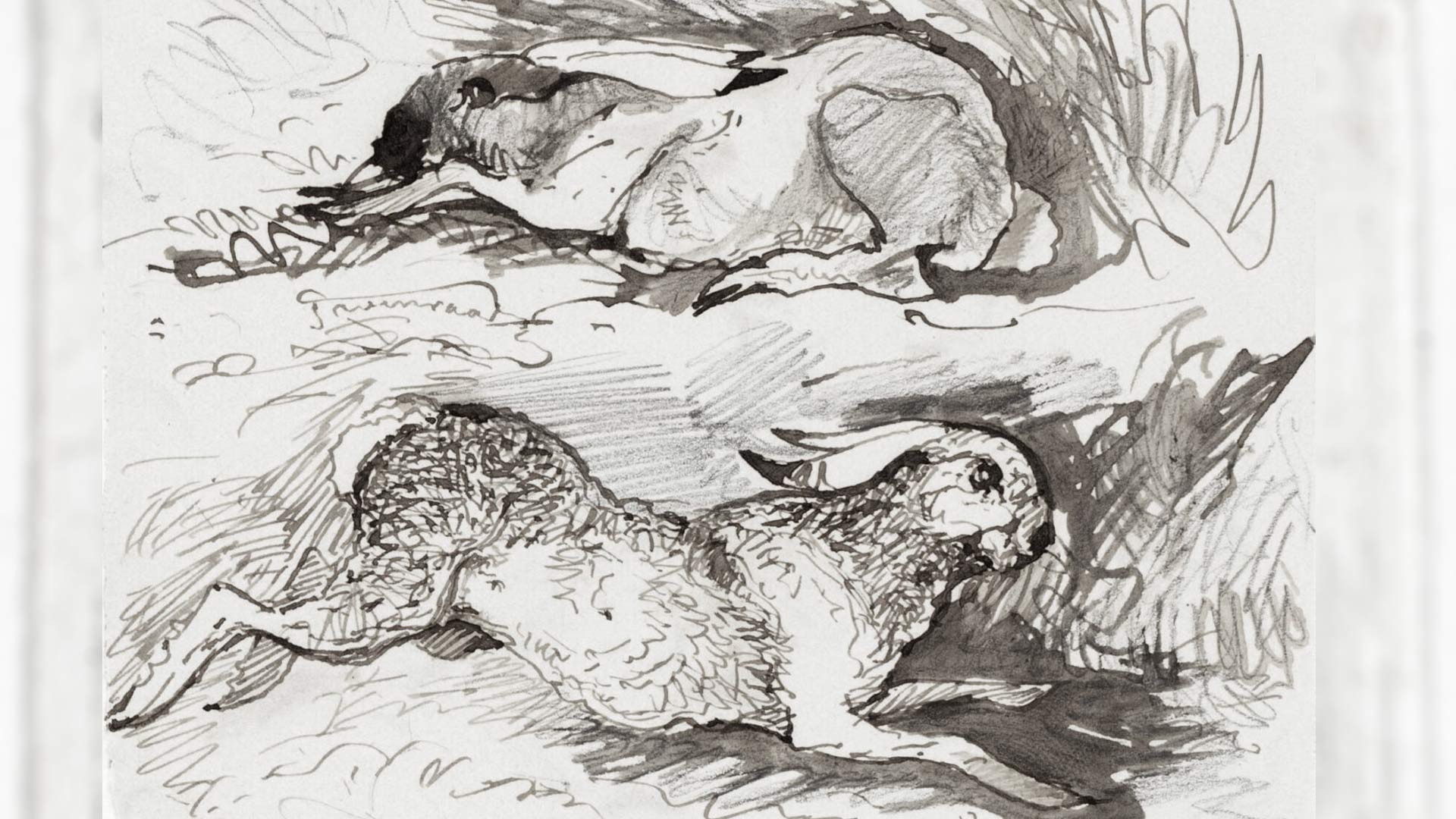Associate lines
Rule 6
workload …
Associated lines indicate the volume of things.
A sketch without lines extending into the shape is more difficult to interpret, as the outlines do not yet make the objects comprehensible
Without linked lines, there is no depth, just silhouettes. You can improve your drawing by connecting shapes with a network of lines.
Watch the film to learn about the 6th rule.
Script
Hello, happy sketching!
Sixth rule: We connect or associate as many lines as possible.
This is the sixth rule.
You can give things volume and body by drawing lines into the surfaces. Wrinkles and other textures are great for this.
Textiles have wrinkels. Everything has lines of some kind, they can be the edges of socks, striped shirts, leaf panicles, folds in curtains, and so on.
You can also see this in your hand.
All fingers have wrinkles. You can use them. Lines that lead into the form also provide spatial information.
Let’s observe this with the rabbit here.
The line of the legs leads deep into the form, here and also here. Here even at the front paw.
Or it can be observed quite beautifully in the curly fur here. There are many lines, all moving within the silhouette. Even the lighter tonal values do that. We’ll take a closer look at that later.
The draughtsman takes a somewhat wilder approach in the area of the background, using the shadows.
With this observation, we move on to the exercises.
Why we should associate all lines?
Lines that are routed into the surface add volume and body. Particularly textures and wrinkles are ideal to use for this purpose. Shady areas can be crosshatched to close the form. Brighter areas can be left open, the absence of lines indicate light.
Associated lines indicate the third dimension and volume. They lead the eye across the surface of the object.
Go to the Rijksmuseum Amsterdam
Rabbit, Johannes Tavenraat, 1840 – 1880
pen, h 168mm × w 108mm


